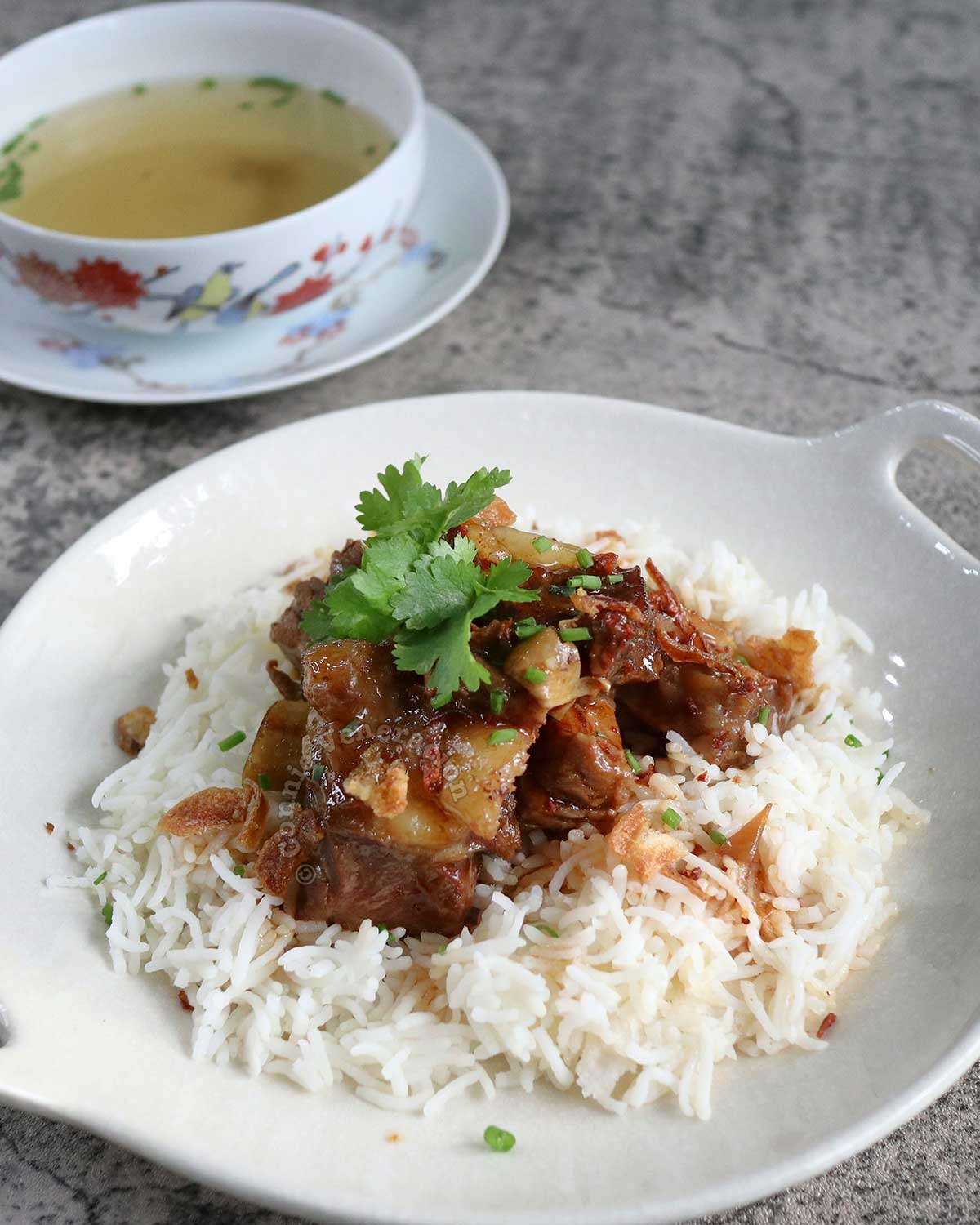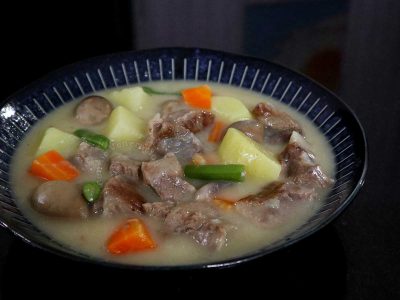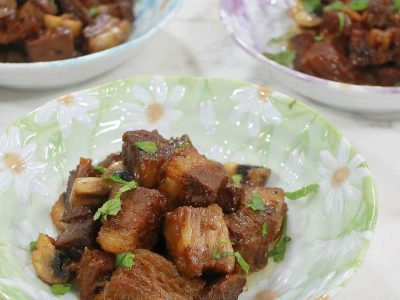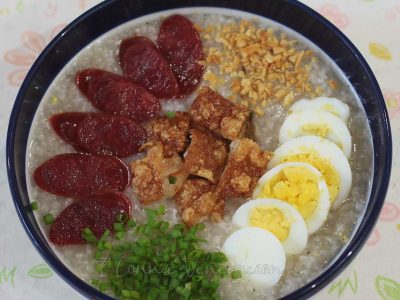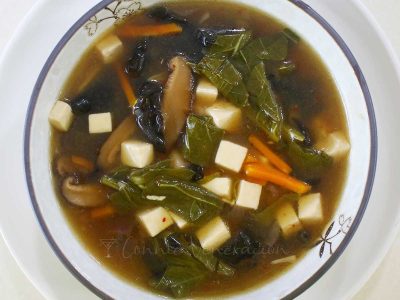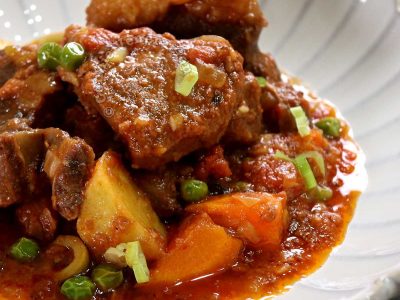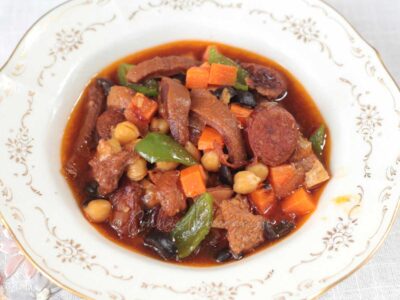If I have to make a guess, I’d say that the origin ofparescomes from an attempt to make cheaper cuts of beef saleable to diners looking for an inexpensive meal.
Years and years later, as beef pares became more popular and pares houses competed to come up with versions that captured the market better, the beef topping turned into a sweet-salty stew and, in most cases, the complimentary beef broth disappeared.
But this is homecooking and we serve beef pares the modern way but with all the traditional components. There’s no added work to serve broth on the side anyway because it’s just the liquid in which the beef was simmered. To cook the beef component, there are three steps:
- Brown the beef
- Simmer the beef with spices
- Make the sauce using the cooking liquid
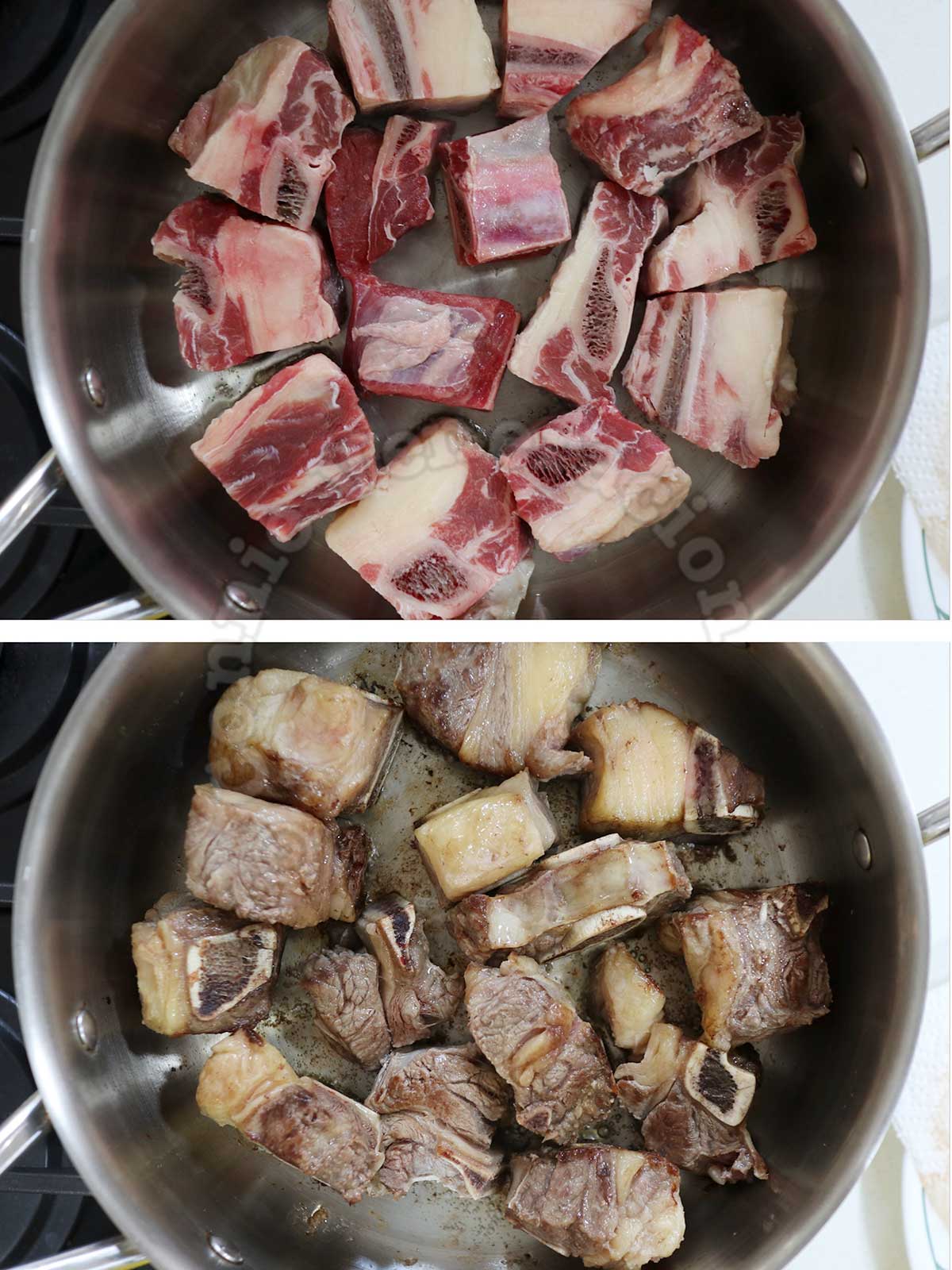
Coat the bottom of a thick-bottomed pan lightly with oil, spread the beef in the hot oil and brown. For even browning, turn the beef on all sides.
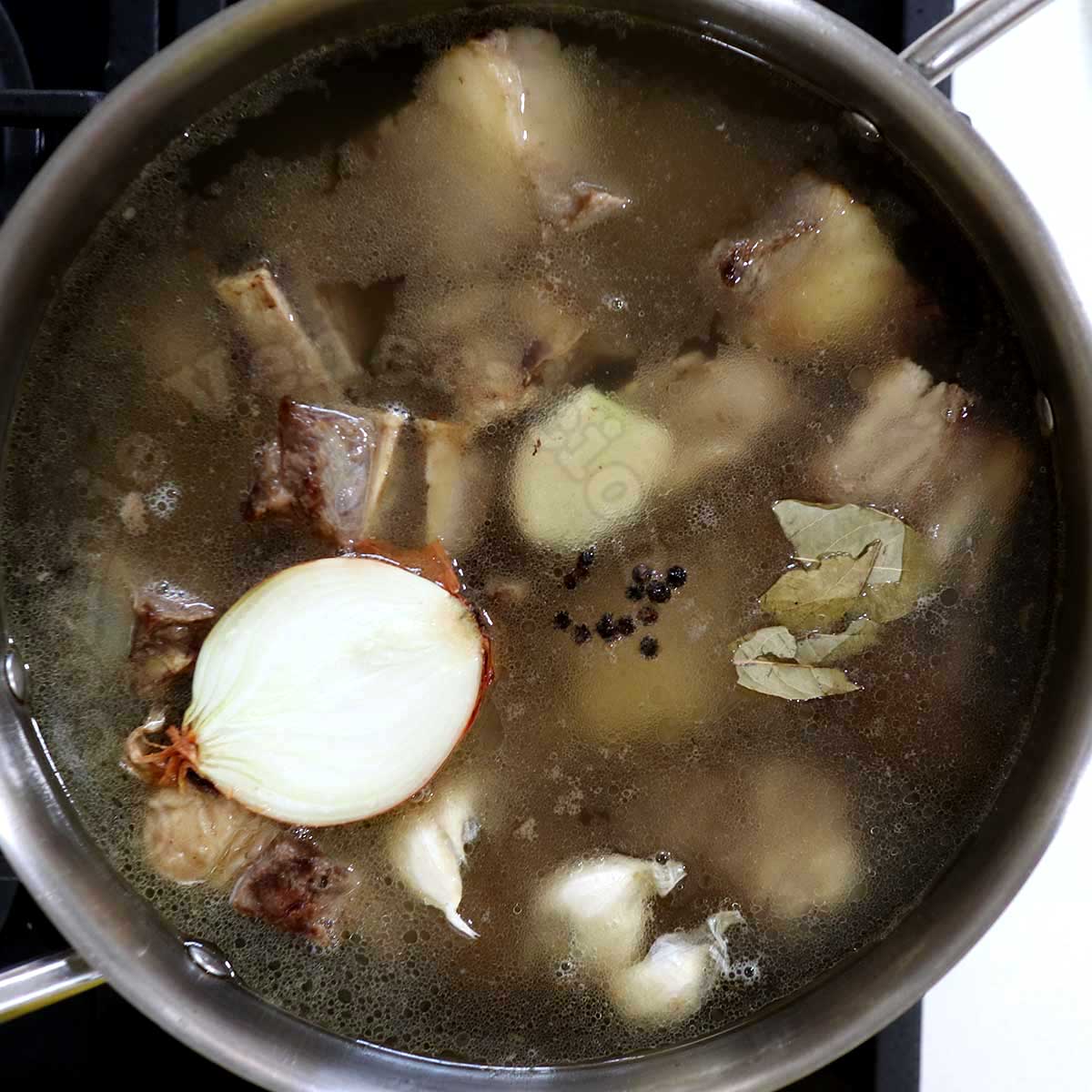
Pour in water, add onion, garlic, peppercorns, ginger, bay leaves and fish sauce. When the water boils, set the heat to low, cover the pan and simmer the beef until very tender. That means the meat should easilt separate from the bone.
The beef is now ready so we prep the broth and the sauce. Just strain the cooking liquid, reserve two cups for the sauce, pour the remaining back into the pan, taste and add more fish sauce if needed. Keep the broth hot. If the room temperature is rather cold, you may want to leave the broth simmering on the stove.
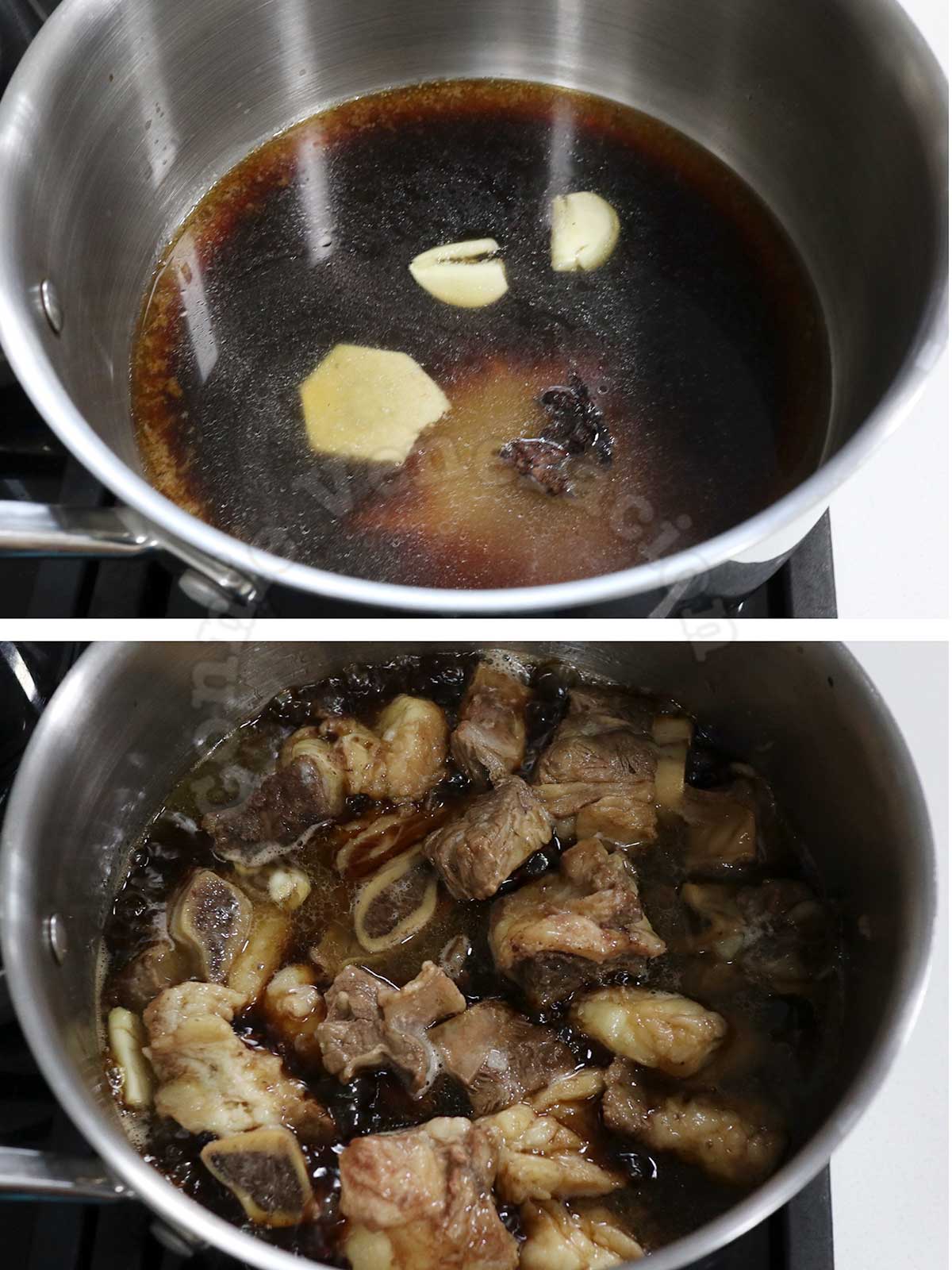
Pour the reserved broth into another pan and add soy sauce, sugar, ginger, garlic and star anise. Drop the drained beef into the sauce and simmer to allow the meat to soak up the flavors.
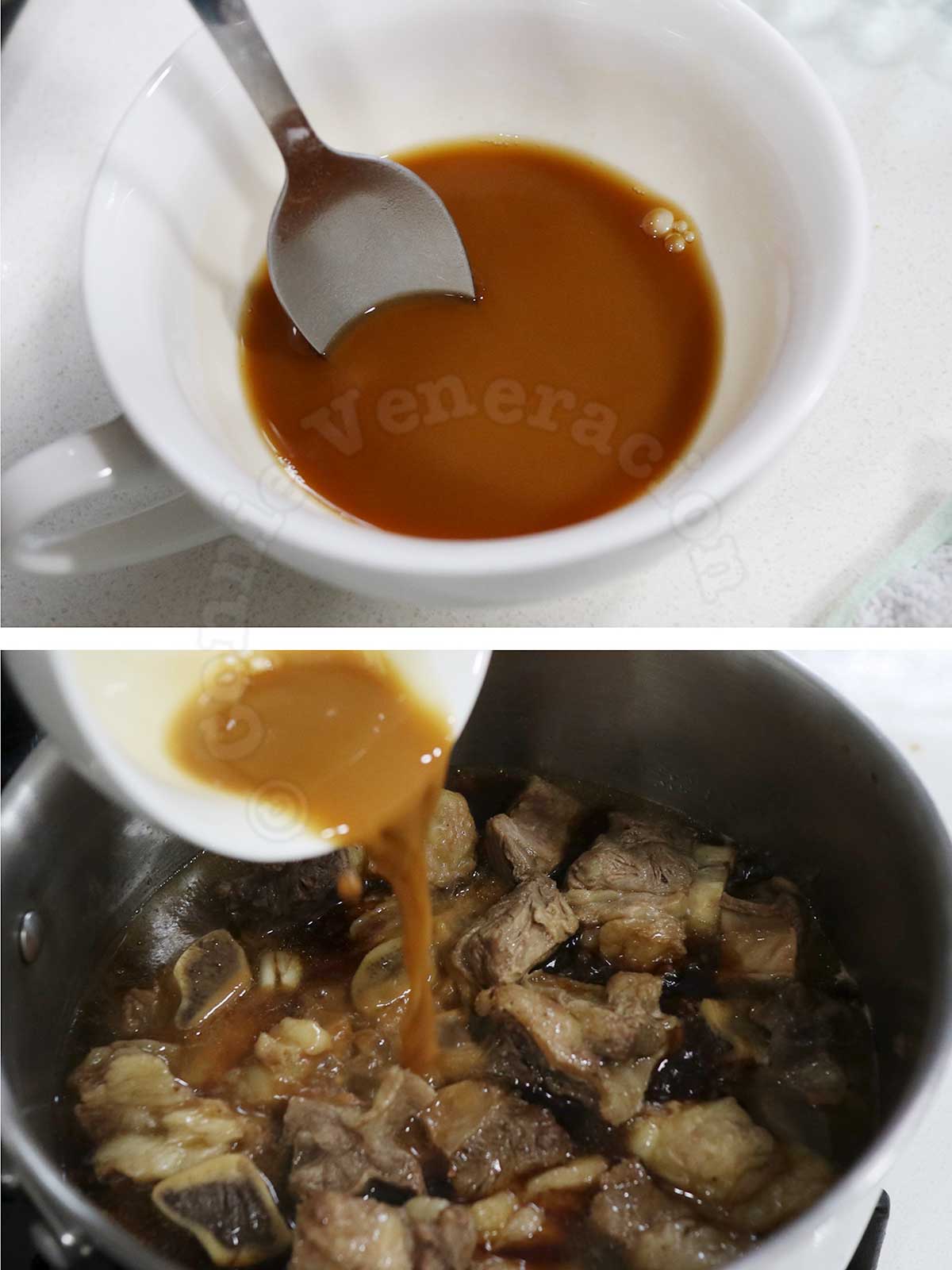
Disperse starch in a little water, pour into the pan with the beef and cook, stirring, until the sauce thickens and clears.
Then, you assemble your beef pares. Put rice into bowls, top with the beef, drizzle in some of the sauce and serve with hot broth on the side.
Beef Pares
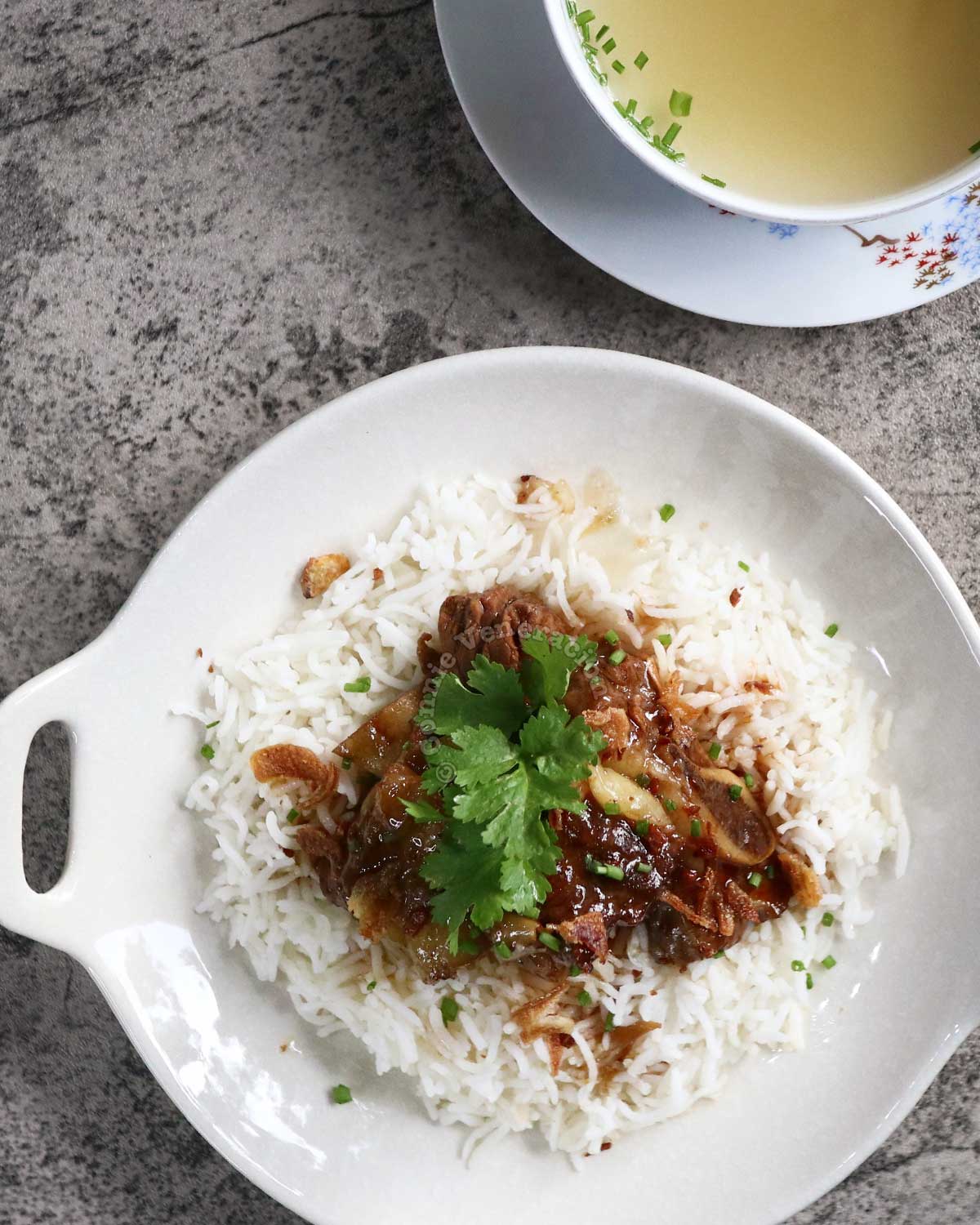
Ingredients
Broth
- 1 kilogram beef short ribs cut between the bones
- 1 tablespoon cooking oil
- ½ onion
- 4 cloves garlic
- 1 slice ginger
- 1 teaspoon peppercorns
- 2 bay leaves
- patis (fish sauce) to taste
Sweet-salty sauce
- 2 cups beef broth
- 2 tablespoons soy sauce
- 2 tablespoons sugar
- 1 slice ginger
- 2 cloves garlic
- 2 star anise
- 2 teaspoons corn starch
To serve the beef pares
Instructions
Cook the beef / make broth
- Rinse the beef and wipe dry with a kitchen towel.
- Heat a thick-bottomed pan and coat the the bottom with a tablespoon of cooking oil.
- Brown the beef on all sides.
- Pour in eight cups of water.
- Add the onion, garlic, peppercorns, ginger, bay leaves and two tablespoons patis.
- Bring to the boil, cover the pan and simmer for about two hours or until the beef easily separates from the bones.
- Scoop out the beef and set aside.
- Strain the broth.
- Reserve two cups of broth, pour the remaining broth into a clean pan and set over low heat. Taste and add more patis, if needed. Keep the broth hot.
Make the sweet-salty sauce
- Pour the reserved broth into a pan.
- Add the soy sauce, sugar, ginger, garlic and star anise.
- Add the beef to the sauce and simmer, turning the beef over occasionally, for about 15 minutes.
- Mix the starch with two tablespoons of water and a teaspoon of soy sauce.
- Pour the starch solution into the pan with the beef, and stir until thickened and no longer cloudy.
- Taste the sauce and add more soy sauce, sugar or both, depending on what your taste buds dictate.
Assemble your beef pares
- Ladle cooked rice on plates or shallow bowls.
- Arrange pieces of beef on top of the rice.
- Drizzle sauce over the beef.
- Garnish with fried garlic, fried shallots, scallions and cilantro.
- Serve your beef pares with hot broth on the side.

